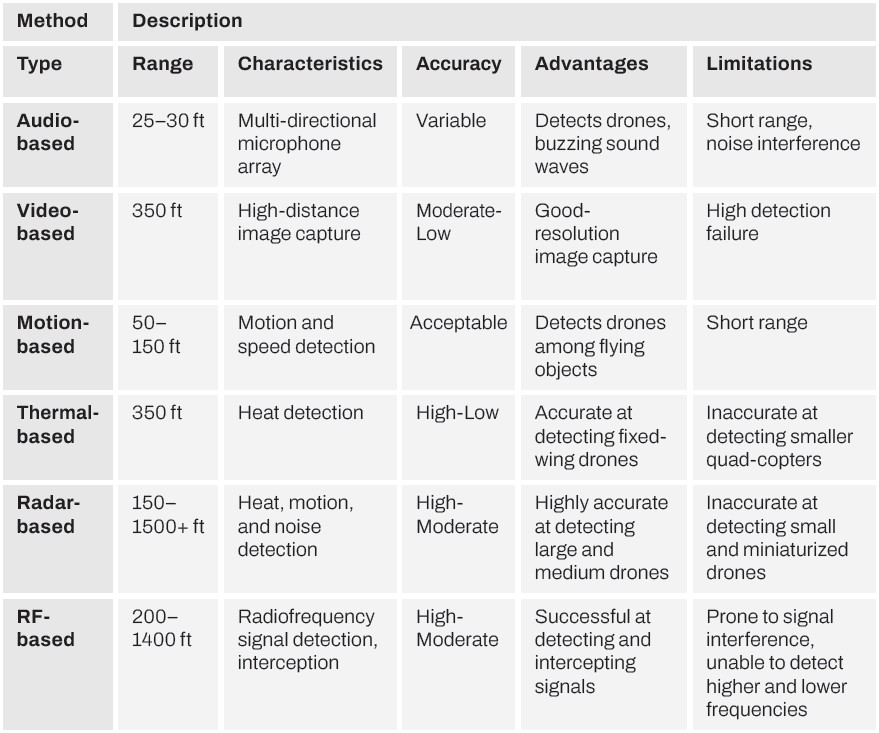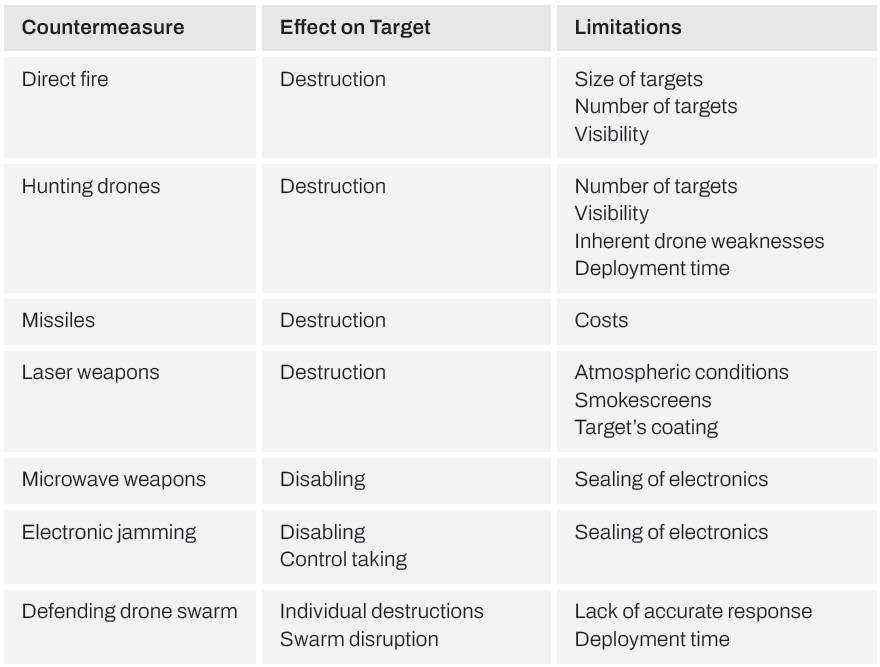Introduction
The Russia-Ukraine and Nagorno-Karabakh wars have proven predictions wrong about how quickly the battle for air supremacy would be decided or how both military conflicts would progress (Deptula, 2024; Gressel, 2020). The effectiveness of tiered air defenses comprising surface-to-air missiles (SAM), anti-aircraft guns, and man-portable air-defense missiles (MANPADS) have been an enduring feature of the air war in Ukraine (Deptula and Bowie, 2024). Absent air superiority, medium- and high-altitude missions have broadly been deemed high-risk for fighter aircraft, constraining their role. In Ukraine, with neither side gaining superiority in the air to allow for the uncontested use of combat aircraft, the resulting air parity shifted the focus of delivering combat effects to missiles and drones (Deptula and Bowie, 2024). However, just as air defense systems have constrained penetrating aircraft, they have also proven largely effective in intercepting the vast majority of missile attacks. The resulting mass diffusion of inexpensive but versatile drones for operational and tactical uses has had a transformative impact, intensifying the speed, range, lethality, and psychological pressure of combat. These “analogs of air power” will almost certainly be a permanent fixture of future warfare, spurring the production and procurement of small, low-cost drones worldwide (Chavéz and Swed, 2024). Although the implications of drones on the changing character of warfare have been widely analyzed, the focus has been primarily limited to large actors and their embrace of advanced drones at the high end of the technology spectrum (Kunertova, 2023a; Murray, 2023). Relatively little attention, in contrast, has been given to the utility of low-cost drones for the air power of smaller states (Kramar et al., 2021).
Small, low-cost drones are driving a “democratization” of air power, making military effects more accessible and at lower price points (Postma, 2021). This paper outlines four lessons drawn from the use of small, low-cost drones in recent conflicts (Renic and Christensen, 2024; Gressel, 2020). Firstly, diverse drone arsenals will be critical for operational and tactical warfighter needs in constrained and contested battlespaces. Their potential to cost-effectively amplify firepower and project combat mass with speed will drive the strategic adoption of these systems at scale. Secondly, drone proliferation in warfare underscores the importance of developing counter-drone technologies. Ensuring acquisition is centered on sustainable affordability will be essential for defending critical military and civilian assets vulnerable to the future drone threat. Local area, short-range air defense, and electronic warfare (EW) will need to be adapted, incorporating new technologies such as counter-drone lasers and guns. Thirdly, international cooperation is imperative to manage the cost of production at scale and for pooling knowledge and resources. Procuring and integrating drones into force structures should be approached as a cooperative endeavor to ensure future requirements can be met effectively and efficiently. Fourthly, not every lesson from recent operational theaters will be applicable elsewhere, and national policy must be tailored to specific threat environments and warfighter requirements. Finally, militaries must ensure a legally and ethically responsible position on the development and use of increasingly autonomous weapons systems.
Procuring and integrating drones into force structures should be approached as a cooperative endeavor to ensure future requirements can be met effectively and efficiently.
Dr. Neil Renic
Lesson I: The Evolving Use of Drones in Air Power
For decades, American and European interest in armed drones focused primarily on medium-altitude, long-endurance (MALE) models. These expensive, high-tech platforms were utilized extensively in the Global War on Terror, primarily by the U.S. military in Afghanistan, Iraq, and elsewhere. More recently, MALE drones like the Bayraktar TB2 were deployed by Azerbaijan in the Second Nagorno-Karabakh War and by Ukrainian armed forces in their conflict with Russia (Postma, 2020; Danczuk, 2023). Increasingly, however, military attention has shifted to smaller, inexpensive drones at the lower end of the technology spectrum (Cook, 2023). Fast, hard to detect, employable for one-way attack (OWA) or reusable, produced and expendable at scale, these smaller systems are now utilized for a growing and diverse range of missions, including airborne intelligence, surveillance, and reconnaissance (ISR), EW, and targeting (Renic and Christensen, 2024). Table 9.1 below provides an overview of the difficulties and limitations in detecting small drones that fly at relatively low altitudes.

At the tactical level of warfare, the integration of First Person View-drones has radically increased the availability of low-altitude air power; providing capabilities to support ISR and targeting previously assigned to support aircraft (Bronk and Watling, 2024). Integrated with artillery units, drones have also enhanced the pace and precision of frontline strikes, compressing the kill chain to less than 5 minutes (Cranny-Evans, 2023; Renic and Christensen, 2024). Small, low-cost drones have expanded the scope of operational capabilities for military users, cost-effectively providing a means to strike quickly at high-value and expensive targets (Renic and Christensen, 2024, p. 58). For example, so-called kamikaze drones have been used by Ukrainian units to target and destroy ships at sea, disrupting vital sea lines of communication (Eckel, 2024; Williams, 2024). More advanced models like the Bayraktar TB2 have proven highly effective in striking at or behind enemy lines to hit ground units, vehicles, critical infrastructure, and logistics nodes. Smaller OWA drones have also been effective in degrading supply lines and logistics centers.
Drones in Ukraine have been deployed in their thousands, scouting the battlespace to gather intelligence, track opposing force movements, and geolocate positions, contributing to a more ‘transparent’ battlespace. With enemy maneuver becoming more detectable and high-value platforms like armored tanks and tactical command more vulnerable to targeting by drones, ground forces have placed a premium on speed, dispersion, and detection avoidance. As a highly valuable but also expendable resource that can be deployed and expended at scale, small, low-cost drones are increasingly dominating the military thinking around Europe and elsewhere, for large and small militaries alike. There is a realization that small, low-cost drones can enable high-intensity warfare by making possible long-range strikes at significantly lower costs. Ukrainian drones, for example, have operated more than 1,000km (620 miles) inside Russia and have been shot down over Moscow (BBC News, 2024). Additionally, the persistent threat from drone systems on and beyond the frontline can amplify psychological stress against opponents and support information operations to influence adversarial decision-making.
In the future, even small military actors will gain from the increased strategic depth and operational flexibility enabled by the deployment of diverse drone arsenals. However, assessing where and how drones can be integrated within existing force structures to enable operational gains cohesively is no straightforward task. Embracing a mix of high-end, advanced drone platforms for strategic ISR to “see deep” and “strike deep” with small, low-cost drones that can be produced and deployed at speed and scale for tactical effects, will be essential. Finally, success in drone warfare will depend on more than drone access; beyond mere production and procurement, the effectiveness of projecting air power using drones will depend on institutional factors, including doctrine, integration, and warfighter training. In turn, these highlight other enabling factors, such as the role of adaptive mindsets and military innovation. Militaries must plan for a future in which every adversary, even non-state actors, can be expected to possess a versatile drone arsenal to deploy at scale. Owing to this, militaries must think not just about their potential use of drones but also address how they will counter drone threats.
Lesson II: The Imperative of Counter-Drone Capability
While drones are effective and versatile weapons, they are not without limits. Firstly, drone technology cannot offset deficiencies in force design, quality, or employment. Secondly, drones do not herald an end to attritional warfare – in some circumstances, they actually reinforce it. Finally, a range of countermeasures are available, with new ones under development to neutralize or mitigate the potential impact of drone use by adversaries. This is not a static and short-loop process, however; the continuous need to maintain and upgrade defenses and countermeasures against the persistent risk of swarming tactics and saturation attacks will be challenged by the cost and complexity of countering ‘cheap’ drones. As JAPCC warned in a report on countering drones: “…the field of counter-UAS needs to be on the cutting edge of current developments …otherwise, NATO will have a clear and decisive disadvantage in upcoming missions” (JAPCC, 2020).
Air defense is guided by hard economics; the systems necessary to neutralize incoming drone threats are often vastly more expensive than the target. For example, drones costing a few thousand dollars are being shot down by interceptors costing over US$1 million. With dozens of small drones routinely launched toward the same target in coordinated strikes, if even 10 percent reach their target, the impact on an opponent’s war economy can be immense (BBC News, 2024). In general, air defenses operated today are designed to detect, identify, and provide target-indicator tracking against high-speed fighter aircraft, and are therefore mostly ineffective against small and slow drones (Gressel, 2020). As the size of the target decreases and as drone swarms are introduced to overwhelm enemy air defenses, these defenses are becoming increasingly challenged (Postma, 2021).
In short, using drones manufactured cheaply and operated at scale can both evade and exhaust air defenses (Postma, 2021). Active defense against drones has become a wicked problem, driving attention toward layering low-tier air defense with more effective and sustainable counter-drones capabilities, including, but not limited to, anti-aircraft platforms like the German Gepard vehicle and SKYNEX platforms, jamming devices like the Lithuanian Skywiper systems, and vehicle-mounted weapons like the Slinger C-UAS (Newsweek, 2023; Forbes, 2023; C4ISRNET, 2023). This highlights a second lesson: Air defenses that prioritize sustainable affordability are vital to defend effectively against enemy drones. Below, table 9.2 illustrates the major countermeasures for drone threats and their limitations.

Lesson III: International Cooperation on Drone Technology
Cooperative approaches for maximizing the potential gains from the expanded use of small, low-cost drones and minimizing the costs of counter-drone capabilities will be vital going forward. With an average attrition rate as high as 10,000 units per month by Ukrainian forces, drones are better conceptualized, in procurement terms, as a type of ammunition (Watling and Reynolds, 2023). This underscores the industrial levels of production and supply availability needed to meet warfighter requirements with drones in sustained operations. With military requirements to procure small, low-cost drones now in millions of units per year, companies worldwide have stepped in to meet these rapidly growing military needs (Zelenskyy, 2023; Euroactive and Reuters, 2024; Martin, 2024; Clark, 2024). Manufacturers from the U.S., Turkey, the United Kingdom, and Canada, among others, are supplying a vast range of drone and counter-drone technologies, such as the Phoenix Ghost loitering munition drone, Bayraktar TB2, and Terrahawk Paladin air defense systems (Zelenskyy, 2023; Renic and Christensen, 2024). Russia, too, has expanded its industrial connections, using the Iranian-made Shahed kamikaze drone and now manufacturing its own EW-hardened variant, known as the Geran-2 (Geranium) locally, in Siberia (Bennet and Ilushyhina, 2023; Euroactive and Reuters, 2024).
International cooperation is key for military users to meet rapidly growing warfighter requirements through increased industrial capacity. To exploit the maximum potential of drones in future warfare, international cooperation in procurement, technology development, and integration will be essential. Governments and militaries need to strengthen cooperative mechanisms with allies and partners to develop joint programs for the procurement, development, training, and integration of drone technology into force structures. In relative terms, drone technologies are highly affordable and only getting more so, though future drone warfare itself will not be cheap. Establishing an adequate industrial base, training and re-training operators, sourcing foreign investment, and purchasing platforms at scale are key elements of capability development for low-cost drones. All of this will require time and resources.
Lesson IV: The Need for Tailored Approaches
While recent armed conflicts provide critical lessons on future warfare, especially in relation to the transformative role of drone power, a final lesson relates to what not to learn. The specific characteristics of the Russia-Ukraine war, for example, including its scale, cost, and strategic backdrop, are not perfectly replicated elsewhere (Renic and Christensen, 2024). For Ukraine, the conflict represents an existential threat with extremely high stakes which were a key driver in its acquisition and fielding of drones at break-neck speed. Ukrainian military officers, technicians, and civilians have collaborated with innovative and experimental approaches to the use and development of drones, along with a range of other technologies. Once it had grasped the utility of small, low-cost drones to project air power at reduced cost and operational risk, the Ukrainian government supported the rapid development of industrial capacity and created a network combining ‘commercial satellite services, open-source intelligence, and drones,’ gathering and transmitting through systems like DELTA (Devaraux, 2023).
DELTA is a battle management system integrating NATO ISTAR standards to provide cross-domain situational awareness to users. Later enhanced with AI and machine learning capabilities, exploiting big data analytics, DELTA has been vital for improving the use and effects of drones (CSIS, 2024). For example, British engineers from Palantir, a data analysis software provider, have supported Ukrainian counterparts in developing solutions for mapping the best routes for drones to reach targets while skirting around air defenses, radar, and electronic jammers, using data from signals intelligence and satellite imagery (BBC News, 2024). Supported by AI, some drones are now programmed with more than 1,000 waypoints to evade countermeasures (CNN, 2024). As Retired Major General Robin Fontes of the US Cyber Command stated, operational data and analysis from recent operational theaters feed into AI laboratories, allowing companies to “fine-tune, adapt, and improve their AI systems on the go.” The applied lessons and knowledge from recent operations push forward incremental improvements in military AI, facilitating movement toward the “networked battlefield” of the future (National Defense Magazine, 2023).
With its growing reliance on drones, Ukraine has formed a separate branch to accelerate innovation in ground, maritime, and aerial uninhabited system development (Bieliesko, 2024). With this openness to experimentation and quick adoption of new systems and technologies, the Ukrainian military, like others, has become more open to the use of more autonomous weapons systems. However, the movement toward greater autonomy is not without strategic, ethical, and legal trade-offs, especially in relation to the reduction of meaningful human control in the exercise of lethal force (Renic and Christensen, 2024). Governments must strategically evaluate the benefits and risks of loosening regulatory frameworks relating to autonomous drone technology.
While there are clear military incentives for these technologies, ethical and legal considerations need to be urgently addressed. Militaries must also maintain caution in the adoption of AI more broadly, identifying specific applications where AI can improve operational efficiency while maintaining meaningful human control and judgment over critical decision-making. Expanding the use of drones to solve operational challenges and maximize military effectiveness may help militaries seize the advantage, but they must remain cognizant of the practical limits of these tools and their ethical use. Although states cannot decisively impact international regulation as individual actors, a common recognition of the need to avoid an global autonomous arms race would critically help promote ethical and legal development approaches.
Militaries must also maintain caution in the adoption of AI more broadly, identifying specific applications where AI can improve operational efficiency while maintaining meaningful human control and judgment over critical decisionmaking.
Dr. Neil Renic
Conclusion
Recent conflicts have underscored the transformative impact of small drones and offer critical insights for other militaries to build the capacity to project air power at lower price points in highly constrained and contested spaces. By taking four key lessons, the militaries can position themselves to effectively prepare for drone warfare. Firstly, military actors can be empowered at the operational and tactical levels with better clarity, precision, and reach in contested battlespaces by small, highly affordable drones. Secondly, effectively countering drone threats will require new approaches to low-tier air defense, which must be reinforced with newer, more cost-effective solutions. Thirdly, the role of international cooperation will be crucial in pooling resources and expertise to ensure the cost-competitive industrial-scale production capacity necessary to support future drone requirements. Finally, militaries must build tailored approaches for embracing low-cost drones at scale to reflect their unique threat environment and warfighter requirements, ensuring that ethical and legal standards to guide the expanded use of drones and AI are maintained.
References
BBC News. (2023), Ukraine drone war: Russia’s unmanned aerial vehicles [Online] BBC News. Available from: https://www.bbc.com/news/world-us-canada-68901820
BBC News. (2024), Ukraine’s long-range strikes bring war home to Russia [Online]. Available from: https://www.bbc.com/news/articles/c6240qepyppo
Bennet, D. and Ilushyhina, M. (2023), Inside the Russian effort to build 6,000 attack drones with Iran’s help [Online] The Washington Post. Available from: https://www.washingtonpost.com/investigations/2023/08/17/russia-iran-drone-shahed-alabuga/
Bieliesko, M. (2024), Outgunned Ukraine Bets on Drones as Russian Invasion Enters Third Year [Online] Atlantic Council blog. Available from: https://www.atlanticcouncil.org/blogs/ukrainealert/outgunned-ukraine-bets-on-drones-as-russian-invasion-enters-third-year/
Bondar, K. (2024) Understanding the Military AI Ecosystem of Ukraine. Center for Strategic and International Studies. Available from: https://www.csis.org/analysis/understanding-military-ai-ecosystem-ukraine
Bronk, J. (2023) De-centralized command and control in air operations: Implications for air battle management and mission command. The Air Power Journal. Available from: https://theairpowerjournal.com/decentralized-c2-air-operations-battle-management-mission-command/
Bronk, J. and Watling, J. (2024) Mass Precision Strike Designing UAV Complexes for Land Forces. RUSI. Available from: https://www.rusi.org/explore-our-research/publications/occasional-papers/mass-precision-strike-designing-uav-complexes-land-forces
C4ISRNET. (2023), Here’s the counter-drone platforms now deployed in Ukraine [Online] C4ISRNET. Available from: https://www.c4isrnet.com/opinion/2023/11/21/heres-the-counter-drone-platforms-now-deployed-in-ukraine/
Chavéz, K. and Swed, O. (2023) Emulating underdogs: Tactical drones in the Russia-Ukraine war. Contemporary Security Policy, 44(4), pp. 592–605
Chavéz, K. and Swed, O. (2024), Small drones for big militaries: The way ahead [Online] War Room. Available from: https://warroom.armywarcollege.edu/articles/small-drones/
Clark, C. (2024), NATO ‘drone coalition’ for Ukraine announces new common fund, formalizes plans [Online] Breaking Defense. Available at: https://breakingdefense.com/2024/07/nato-drone-coalition-for-ukraine-announces-new-common-fund-formalizes-plans/
CNN. (2024), Exclusive: Inside a secretive Ukraine drone unit targeting Russian territory [Online]. Available from: https://edition.cnn.com/2024/10/16/europe/elite-ukrainian-drone-unit-russia-intl-cmd/index.html
Cook, E. (2023), Why Ukraine’s Once-Feared Bayraktar Drones Are Becoming Obsolete [Online] Newsweek. Available from: https://www.newsweek.com/ukraine-bayraktar-tb2-russia-1839972
Cranny-Evans, S. (2023) Russia’s Artillery War in Ukraine: Challenges and Innovations. RUSI. Available from: https://rusi.org/explore-our-research/publications/commentary/russias-artillery-war-ukraine-challenges-and-innovations
Crebo-Rediker, H. (2024), Coming to Ukraine’s defense: Leveraging the European Investment Bank for Ukrainian drone manufacturers [Online] Council on Foreign Relations. Available from: https://www.cfr.org/article/coming-ukraines-defense-leveraging-european-investment-bank-ukrainian-drone-manufacturers
Danczuk, J. (2023) Bayraktars and Grenade-Dropping Quadcopters: How Ukraine and Nagorno-Karabakh Highlight Present Air and Missile Defense Shortcomings and the Necessity of Unmanned Aircraft Systems. Military Review.
Denisova, K. (2024), German drone manufacturer opens factory in Ukraine [Online] The Kyiv Independent. Available from: https://kyivindependent.com/german-drone-manufacturer-opened-factory-in-ukraine/
Denisova, K. (2024), German drone manufacturer opens factory in Ukraine [Online] The Kyiv Independent. Available from: https://kyivindependent.com/german-drone-manufacturer-opened-factory-in-ukraine/
Deptula, D. and Dr. Bowie, C. J. (2024) The Significance of Air Superiority: The Ukraine-Russia War. Mitchell Institute for Aerospace Power Studies. Available from: https://mitchellaerospacepower.org/wp-content/uploads/2024/07/Ukraine_Control_of_the_Air_Policy_Paper_50.pdf
Deptula, D.A. and Bowie, C.J. (2024) The Significance of Air Superiority: The Ukraine-Russia War. Mitchell Institute. Available from: https://mitchellaerospacepower.org/the-significance-of-air-superiority-the-ukraine-russia-war/
Devaraux, B. (2022), Loitering Munitions in Ukraine and Beyond [Online] War on the Rocks. Available from: https://warontherocks.com/2022/04/loitering-munitions-in-ukraine-and-beyond/
Devaraux, B. (2023), Open-source technology and public-private innovation are the key to Ukraine’s strategic resilience [Online] War on the Rocks. Available from: https://warontherocks.com/2023/08/open-source-technology-and-public-private-innovation-are-the-key-to-ukraines-strategic-resilience/
Eckel, M. (2024), Ukraine Has No Navy. But It’s Hammering Russia in the Black Sea [Online] RadioFreeEurope, RadioLiberty. Available from: https://www.rferl.org/a/ukraine-navy-black-sea-russia/32826343.html
Euroactive and Reuters (2024), Putin says Russia is ramping up drone production tenfold [Online] Euroactive. Available from: https://www.euractiv.com/section/defence-and-security/news/putin-says-russia-is-ramping-up-drone-production-tenfold/
Finlan, A. (2021) The shape of warfare to come: a Swedish perspective 2020–2045. Defense and Security Analysis, 37(4), pp. 472-491
Forbes. (2023), Ukraine’s nearly 50-year-old Gepards are still the best air defense guns in the world [Online] Forbes. Available from: https://www.forbes.com/sites/davidaxe/2023/09/08/ukraines-nearly-50-year-old-gepards-are-still-the-best-air-defense-guns-in-the-world/
Gressel, G. (2020) Military lessons from Nagorno-Karabakh: Reason for Europe to worry [Online] European Council on Foreign Relations. Available from: https://ecfr.eu/article/military-lessons-from-nagorno-karabakh-reason-for-europe-to-worry/
Guitton, J. (2021). Fighting the Locusts: Implementing Military Countermeasures Against Drones and Drone Swarms. Scandinavian Journal of Military Studies, 4(1), pp. 26–36. Available from: https://doi.org/10.31374/sjms.53
Khomenko, I. (2024), Ukraine introduces innovative strategy against Russian attack drones. Here’s what we know [Online] United24 Media. Available from: https://united24media.com/latest-news/ukraine-introduces-innovative-strategy-against-russian-attack-drones-heres-what-we-know-2965
Kramar, V., Hinkula, H., Erkkilä, J. and Kolli, T. (2021). Overview of the Nordic challenges for unmanned aircraft systems. 30th Conference of Open Innovations Association FRUCT, pp. 86–98
Kunertova, D. (2023a) The war in Ukraine shows the game-changing effect of drones depends on the game. Bulletin of the Atomic Scientists, 79(2), pp. 95-102
Kunertova, D. (2023b) Drones have boots: Learning from Russia’s war in Ukraine. Contemporary Security Policy, 44(4), pp. 576-591
Layton, P. (2023) Future options for artificial intelligence and machine learning-assisted decision-making in air warfare. The Air Power Journal. Available from: https://theairpowerjournal.com/artificial-intelligence-machine-learning-decision-making-air-warfare/
Martin, T. (2024), European coalition bids to deliver 1 million drones to Ukraine [Online] Breaking Defense. Available from: https://breakingdefense.com/2024/02/european-coalition-bids-to-deliver-1-million-drones-to-ukraine/
Miller, C., Hall, B., Schwartz, F. and McCormick, M. (2024), US urged Ukraine to halt strikes on Russian oil refineries [Online] Financial Times. Available from: https://www.ft.com/content/98f15b60-bc4d-4d3c-9e57-cbdde122ac0c.
Murray, R. (2023) Innovation and military strategy: Shifting to decentralized and dispersed approaches. The Air Power Journal. Available from: https://theairpowerjournal.com/innovation-and-military-strategy-shifting-to-decentralized-and-dispersed-approaches/
National Defense Magazine. (2023), Ukraine: A living lab for AI warfare [Online] National Defense Magazine. Available from: https://www.nationaldefensemagazine.org/articles/2023/3/24/ukraine-a-living-lab-for-ai-warfare
NATO Joint Air Power Competence Center. (2020) A comprehensive approach to countering unmanned aircraft systems. Joint Air Power Competence Centre. Available from: https://www.japcc.org/c-uas-defensive-counter-air-operations/
Newsweek. (2023), Ukraine’s air defenses – Skynex [Online] Newsweek. Available from: https://www.newsweek.com/ukraine-air-defenses-skynex-1935141
Postma, J. (2020) Drones over Nagorno-Karabakh: A glimpse at the future of war? Atlantisch Perspectief, 45(2), pp. 15-20.
Postma, J. (2021) Drones over Nagorno-Karabakh: A glimpse at the future of war? Atlantisch Perspectief, 45(2), pp. 15–20. Available from: https://www.jstor.org/stable/48638213
Renic, N. and Christensen, J. (2024) Drones, the Russo-Ukraine War and the future of armed conflict. Center for Military Studies. Available from: https://cms.polsci.ku.dk/english/publications/drones-the-russo-ukrainian-war-and-the-future-of-armed-conflict/
RFE/RL’s Russian Service. (2024), Ukrainian Drones Struck Russian Oil Facility, Igniting Major Fire, Source Tells RFE/RL’, RadioFree Europe Radio Liberty. Available at: https://www.rferl.org/a/russia-fire-oil-depot-azov-drone-attack/32997491.html
Rogers, J. (2023) Arctic drones – A new security dilemma. The Geographical Journal, 189, pp. 422–437.
Stoll, H., Hoehn, J. and Courtney, W. (2024) Air defense shapes warfighting in Ukraine. RAND. Available from: https://www.rand.org/pubs/commentary/2024/02/air-defense-shapes-warfighting-in-ukraine.html
Terajima A. (2024), Ukraine introduces innovative strategy against Russian attack drones. Here’s what we know [Online] Kyiv Independent. Available from: https://kyivindependent.com/explainer-irans-cheap-effective-shahed-drones-and-how-russia-uses-them-in-ukraine/
Watling, J. and Reynolds, N. (2023) Meatgrinder: Russian tactics in the second year of its invasion of Ukraine. RUSI. Available from: https://www.rusi.org/explore-our-research/publications/special-resources/meatgrinder-russian-tactics-second-year-its-invasion-ukraine
Williams, B. G. (2024), How the Ukrainians – With No Navy – Defeated Russia’s Black Sea Fleet [Online]. Available from: https://www.military.com/daily-news/2024/07/19/how-ukrainians-no-navy-defeated-russias-black-sea-fleet.html
Yaacoub, J., Noura, H., Salman, O. and Chehab, A. (2020). Security analysis of drones systems: Attacks, limitations, and recommendations. Internet of Things. Available from: https://doi.org/10.1016/j.iot.2020.100218
Zelenskyy, V. (2023), Ukraine can and will create the best weapons – President’s speech at the Second International Defense Industries Forum [Online] President of Ukraine. Available from: https://www.president.gov.ua/en/news/ukrayina-mozhe-j-bude-stvoryuvati-najkrashi-zrazki-zbroyi-vi-93613
Militaries must also maintain caution in the adoption of AI more broadly, identifying specific applications where AI can improve operational efficiency while maintaining meaningful human control and judgment over critical decisionmaking.
Dr. Neil Renic







